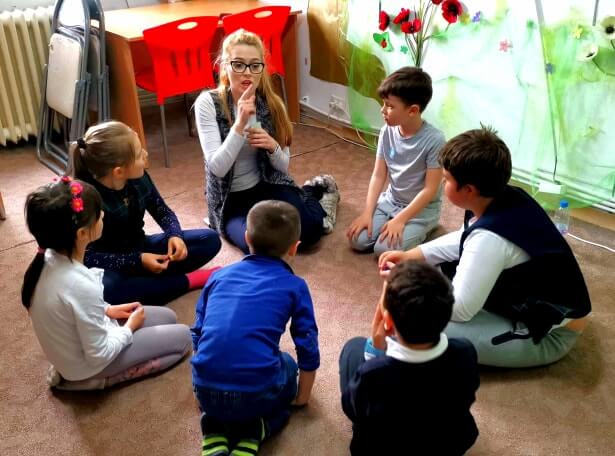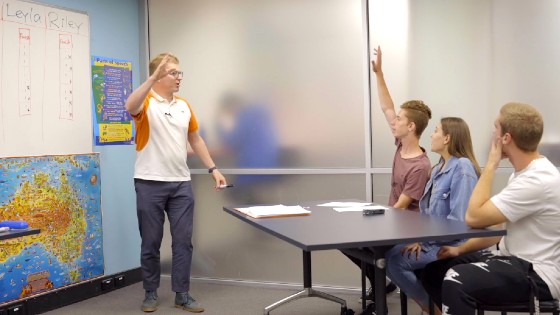Cooperation and teamwork are keys to success in the 21st century, a couple of the “soft skills” that are difficult to bring to bear in the ESL classroom. It’s important to know how to make these an integrated part of lessons and encourage learners to develop the skills through practice. We’ve put together some of the best team-based activities for ESL that can be used in the classroom and online, empowering you to use them even if you happen to be teaching remotely this year!
If you’re new to teaching, you’ll want to get initial training and qualification with a TEFL certificate. You can explore our online TEFL courses to get started!
What are team-based activities for teaching ESL?
Team-based activities are a little different from what you may think. In contrast to group work, which normally does not include a competitive aspect, team-based activities in ESL usually include some form of “winning” or competition.
For example, you may have a class of eight intermediate learners. You could have them turn to talk to a partner (often part of a “Think-Pair-Share” sequence) about a specific question or topic. But a team-based approach might put the class into two teams of four, who have a set amount of time to discuss the question and then have a short “speaking contest” to award points. The difference is slight, but important when it comes to student motivation and outcomes.
Ideally, you can extend the teams-based activities to make the class run like a fun topical quiz show (think of the British shows Have I Got News For You or Mock the Week). You could have each section of the class be a challenge and keep score the whole time, or simply have a quick quiz and break up the teams into different ones for each sequence.

Kids doing a group activity in the classroom.
Why use team-based activities when teaching English?
The chance to increase learner motivation is one of the many reasons to use team-based activities in the ESL classroom, but it isn’t the only one! You may choose to include team-based activities in your lessons because:
One of the biggest problems in ESL is that students may be unwilling to try new things in classes, making their English somewhat “stale” and reducing their communicative competency in real-life situations. The team-based activities add a light amount of pressure that mimics using a non-native language outside the classroom.
How can I use teams when teaching in the classroom?
For starters, you could divide the class into teams at the start of the lesson. It’s up to you, but some teachers have even found that keeping consistent teams over the course of a unit or even a semester can be an effective classroom management and motivation tool.
But there is certainly no need to take it that far if you don’t want to. You can simply have the learners make two or three lines in the room, and then play a competitive vocabulary game with those they lined up with.
Another way to is to randomize the teams using tokens of various colors, characteristics that the students happen to be studying (i.e. has a brother or not), playing cards, or letting the learners choose their own teams.
Once you have the team established, try out some of these team activities:
In addition, you can make traditional bookwork competitive by awarding points for correct answers. In the past, I told teams that I would choose a random book to mark, which meant that they all had to have “good” answers (encouraging them to work together and actually share the load). This is a good way to encourage stronger students not to leave anyone behind in their group.

Young ESL students playing a group game in the classroom
How can I use teams when teaching online?
Teaching online also allows ways to incorporate team activities. Many of the activities that you might use in the classroom can be adapted to online coursework as well. Here are a few technology-specific ways to use teams.
Private Chat Channels
Some online software for classes will allow the instructor to create chats they can see and give authority to specific students to see what’s within. This could allow you to have teams collaborate without speaking aloud, a sneaky way to make their writing better.
Grouping the faces of students on the “blackboard”
Many online classrooms have a way to “drag” the faces of the students into groups. This could help the youngest learners especially with the visual aspect of grouping making it more visible.
Using colors that are assigned to specific students
Draw with a marker tool under or around the faces or names of the learners. This will help them to identify with the team and remember which side they are playing on.
Using scorekeeping widgets
Some classroom software has built-in team scoreboards that you can use to track points throughout a game or class. Check for these in the widgets that your virtual classroom offers.

Jhonny, from Venezuela, teaching English to a group class online
What are some mistakes to avoid when utilizing teams with my students?
Frustration
The most common side effect of using teams in the ESL classroom, especially for young learners, is over competition that leads to emotional upset. There are a lot of ways to prevent and mitigate this, including making sure that your classroom rules include a “Use Teamwork” clause. Support students who may feel frustrated and make sure that they understand it’s all made up and the points don’t matter (the famous line from the TV show Whose Line Is It Anyway?).
Adding elements of random chance such as playing cards or dice also helps. Most learners intrinsically understand that using dice is fairer as a way to get points than a teacher simply saying “Ok, you get six points.” This can help students to learn the life lesson that sometimes we put in hard work and have good skills, but bad luck can happen randomly to anyone. They will also understand over time that the random chance doesn’t actually favor anyone, because they will win some and lose some.
Less strict activities
Another common issue is that team activities may be perceived to be less rigorous than traditional, sit-in-you-chair-and-open-to-page-fifteen classwork. Keep this in mind if you teach on CCTV or online, but switch your activities to be about grammar, writing, reading comprehension, or other “difficult” parts of the class. That way it will be more justified in the minds of parents/colleagues.
When you need to motivate students, using teams is a great way to do it. All the activities that you normally do in an ESL classroom, in person or online, can be adapted to make them into team-based activities, and running your classes like a fun quiz show is a great way to encourage learners to really invest in the coursework. What are your favorite team activities? Reach out and share them with us!









